NEW YORK CITY (Sept. 11, 2009) -- Staff Sgt. Michael Wilson stands watch outside Penn Station as part of a New York National Guard task force that has continuously served since the terrorist attacks eight years ago today.
Wilson enlisted in the National Guard because of the attacks that he first learned about as he labored as a 19-year-old landscaper in Albany, N.Y. Just as the attacks of Sept. 11, 2001, triggered the transformation of the National Guard from a strategic reserve to an operational force, so have they prompted Wilson to morph from teenager to Soldier.
Now 26, he's been on duty more or less continuously ever since, including a stint in Iraq -- a story shared by many of the 280 remaining members of Joint Task Force Empire Shield, which has swelled to as many as 2,500 during surges.
"We are a full-time, state active-duty force of 280, New York City-centric," said Lt. Col. Greg Dreisbach, commander. "It was formed on 9/11 and has been here ... since. We have some guys that have been here since almost day one."
Members of Empire Shield were among first responders to the attacks. Some lost friends. Some served in Empire Shield, then fell serving overseas.
"What we are doing is very important," Spc. Armando Chadilliquen said during a recent visit to the World Trade Center site. "It is very important that we are prepared in case anything happens."
The mission of JTF Empire Shield is to provide homeland security and defense support to civilian authorities as needed, Dreisbach said. The task force works with 53 local, state and federal partners.
Headquartered in Brooklyn at Fort Hamilton, N.Y., - in the shadow of the soaring Verrazano Narrows Bridge, the last bridge across the Hudson before the Atlantic Ocean - the task force has a full operational staff and command and control structure and is designed to absorb a surge of troops in the event of a natural disaster such as a hurricane, or man-made disaster such as another terrorist attack.
"[On] 9/11, we had a cold start," Dreisbach said. "If anything ever happens again, we have a warm start. We can accept up to 1,000 Soldiers and be able to support them for the first 72 hours."
In the meantime, members of JTF Empire Shield train. They perform missions, such as patrolling John F. Kennedy International or La Guardia airports or Penn Station and other mass transit hubs. They join New York State Naval Militia or Coast Guard Reserve colleagues on boats bought with some of the homeland security money released after 9/11 and conduct foot patrols in and around airports or nuclear power facilities.
Each member of the task force still belongs to an Army or Air unit of the New York National Guard and attends weekend drills and annual training to prepare for federal missions. Their state active-duty status is an additional mission.
They've also found time to gather 80 tons of relief supplies for Haiti, palletize it for transport and send it as humanitarian relief to the island nation.
"It's a very diverse mission set," Dreisbach said. "The main thing is that we're trained and ready to carry out the [adjutant general's] intent, whatever that may be."
Wilson said his infantry service in Iraq is an asset in his task force duties. It gave him teamwork, accountability, situational awareness and knowledge of potential threats.
"Combat experience ... gives us a better opportunity to provide support over here," he said. "It gives us a different point of view. ... Whatever goes on in combat, you can apply right here to this mission."
Dreisbach said every visit to Ground Zero is a reminder of why he and his troops serve today. "This is where it all started," he said. "It never loses its [impact]."
Wilson recalled his youthful reaction. "Initially, it was shock, just like everybody else in America. Who would have even thought that the World Trade Center was going to come crashing down' After the initial shock wore off, a little bit of anger, a little bit of determination to go out there and change circumstances.
"It opened up a whole lot of opportunities that National Guard members didn't have. It's heightened our readiness. It's heightened our effectiveness. We're no longer 'weekend warriors.' ... We're out training. ... We're on overseas deployments."
Sgt. Willis Wynne has a year with the task force and an Iraq deployment.
"It's not just overseas where we need to be," he said. "We need to offer a presence back home."
In a city where 9/11 remains fresher and more vivid than in some other parts of the country, task force members say they get a lot of gratitude from the public.
"People come up to us and thank us countless times during the day," said Sgt. Jessica Clark.
"When I joined the National Guard, that's what it was for, to help the community," said Sgt. 1st Class Odessa Covington. "We are doing what a lot of Soldiers raised their right hand to do, to help the community."
Army and Air National Guard members work alongside members of the volunteer New York Guard, the New York State Naval Militia and the Coast Guard in the task force, in addition to the dozens of agency partners.
"We're here every day," Dreisbach said. "We're working with our agency partners. They know us. We know them. You can't get that any other way...
If there ever is an incident in the city, we already have a lot of things worked out. We're already working with them. They know Empire Shield. They know the New York National Guard. They also have an idea about the capabilities that we can bring."
Sometimes the task force joins multiagency super surges, pouring assets into transit hubs or certain areas of the city in response to indications of a threat, or for an exercise. Sometimes task force members perform random anti-terrorism measures at critical infrastructure, such as the Indian Point nuclear power plant, north of the city.
"There's not any given set time or day," Dreisbach explained during one such recent patrol on the Hudson River near Buchanan, N.Y. "It's very random. It keeps the enemy off guard. They don't know when you're going to be there, when you're not going to be there. It allows the force to be more flexible."
(Staff Sgt. Jim Greenhill serves with the National Guard Bureau.)
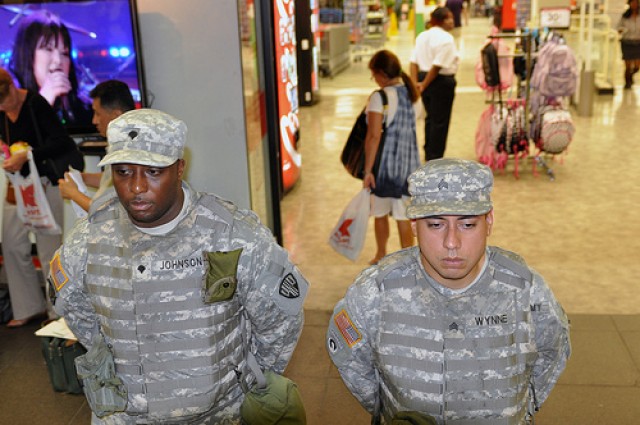
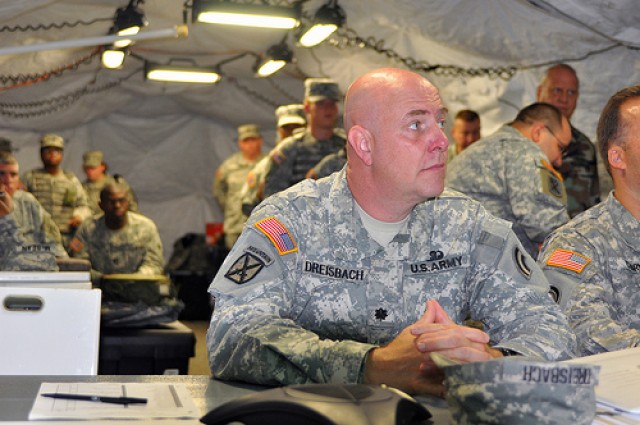
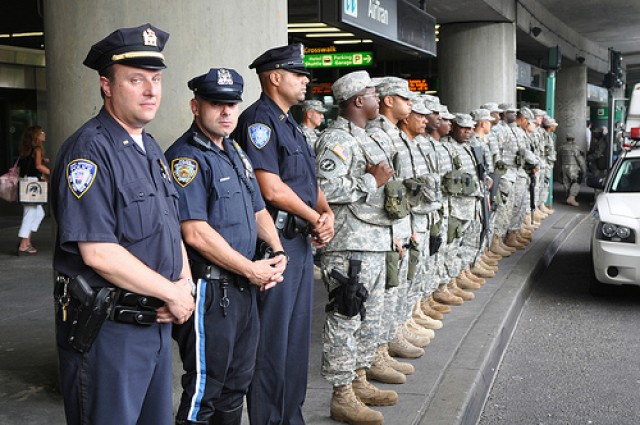
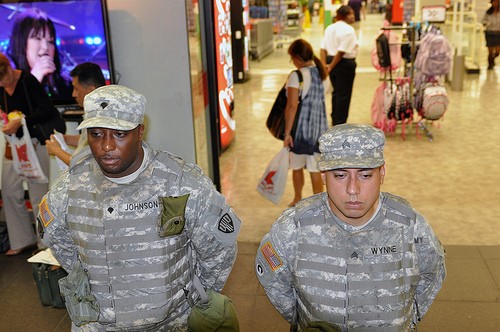
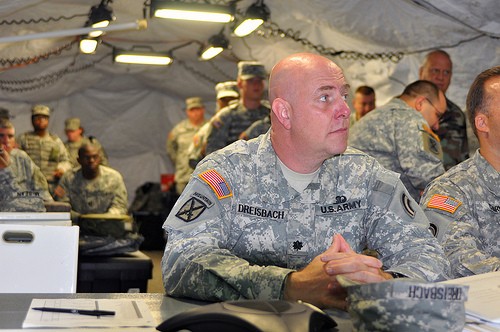

Social Sharing